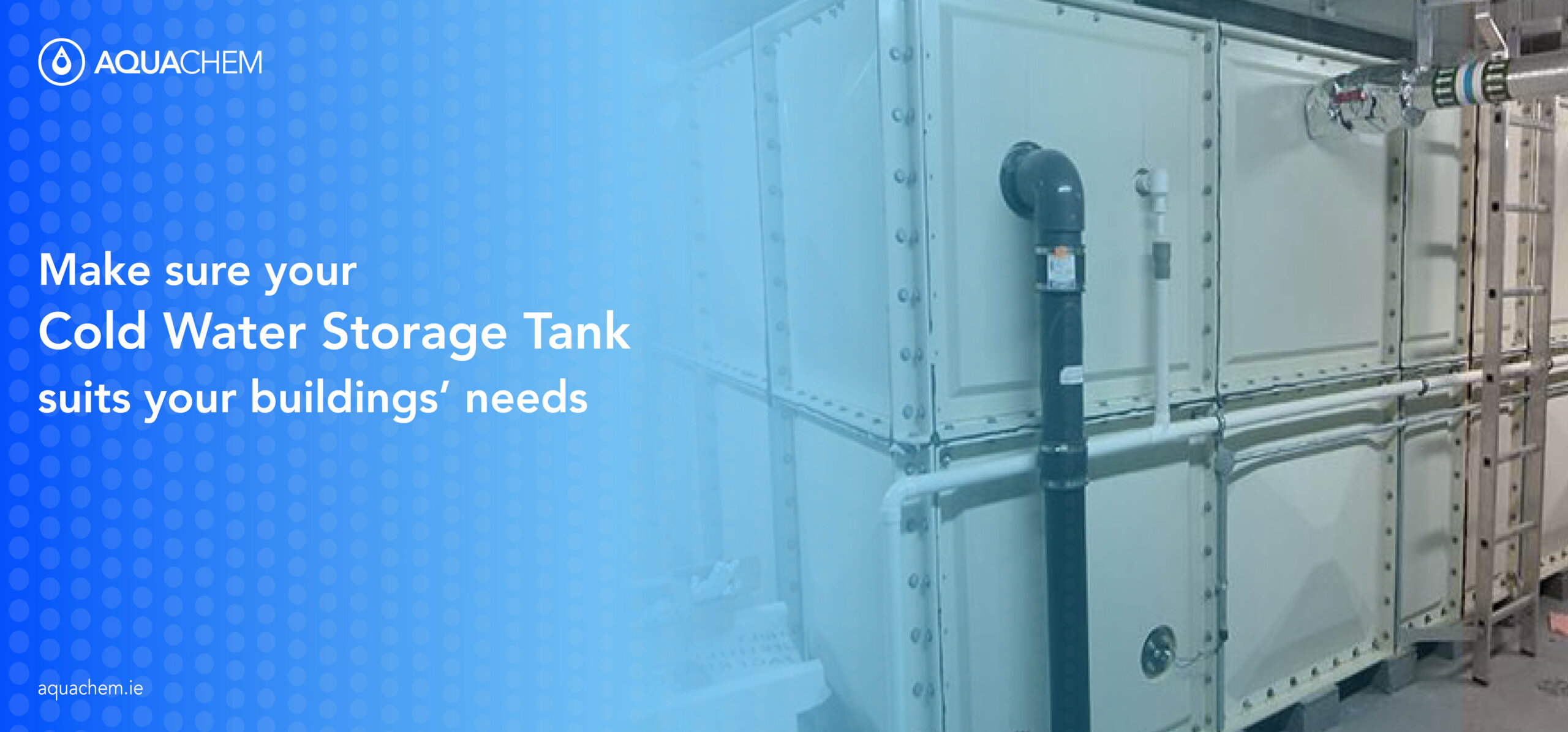Cold Water Storage Tank Considerations
You will find cold water storage tanks in most commercial buildings, their purpose is to maintain water service pressure, maintain emergency storage supply, and provide equalization volume to meet peak demands at times of the day when water use is high.
Traditionally, it is common practice for many water utilities to keep storage tanks in full or near full condition to be prepared for peak water use periods and for emergencies, as a result, many storage facilities operate with larger water storage capacity than is needed for non-emergency usage.
In these cases, water can reside in the tank for a very long time sitting stagnant, if this is not managed properly, legionella could grow and cause harm anyone in contact with the contaminated water.
Since significant amounts of water are consumed in commercial buildings, it is essential to ensure that an adequate recommended level of water is stored through the use of a cold-water storage tank.
Storing cold water
The material of the storage tank will make a great difference to the treatment you would require. Traditionally, cold water storage tanks have been made with galvanised, low carbon steel which corrodes easily and releases contaminants into the water. Nowadays they are usually made with a lightweight, robust material which is resistant to corrosion, hygienic and flexible.
Regardless of the type of tank facility, it is critical that the overflow elevation is properly matched to the pressure of the system, as this allows the water surface within the tank to “float” on the system. In other words, the water elevation in the tank itself creates pressure in the distribution system.
In the event that water overflows and rises above the level it should, an overflow pipe and a warning pipe must be installed. The overflow pipe will discharge water without causing any further damage to the building and the warning pipe will alert building users that the storage tank is overflowing and needs tending to.

As mentioned above, there are a number of risks associated with storing cold water including the risk of bacterial growth. Legionella can grow and thrive in stagnant water and so this must be monitored, guidance from HSE’s HSG724 publication on controlling legionella in hot and cold water systems states that doing the following will help keep water systems safe:
- Installing a tightly fitted lid to the top of the cold water cistern to prevent dirt or other potential nutrients for legionella to feed on from getting into the water.
- Fitting insect and vermin screens to protect pipework that is open to the atmosphere.
- Ensuring that any screens that are fitted are unable to hold water.
- Connecting multiple cold water storage tanks to one another in such a way that forces them to fill equally and draws water off through each of the tanks.
- Making sure the cold water tank has access ports that allow for easy inspection, maintenance and cleaning.
- Connecting the vent pipe to a separate drain and fitting a tundish to discharge water into a safe and visible place, rather than into the cold water storage tank as this can lead to fluctuations in water temperature and increase the risk of legionella.
- It is advised that the volume of stored cold water is minimal and doesn’t exceed the amount required for one day’s usage (for healthcare buildings 12 hours total storage capacity is recommended).
- Checking that water flows regularly to avoid stagnation.

Key Considerations
Reviewing key design considerations will help to determine what type of tank you need (and don’t need). See below a list of key considerations that should be taken before investing:
Tank Size and Placement
Will the tank and its erection be limited by space requirements? For smaller spaces consider a tank of smaller diameter and taller height. Unlimited spaces will allow for a tank of wider diameter and shorter height.
Consider the Environment
Wind loads, seismic conditions and roof loads (such as snow loads) are important criteria for tank design.
Think About Expansion
Will your business demand expansion down the road? Field welded and concrete designs may not be expanded, while bolted tanks are expandable with simple hardware and gasket.
Think About Moving
Yes, it’s possible to move some tanks. While field welded and concrete tanks are permanent, bolted designs may be taken apart and reassembled panel by panel.
The Safety Factor
Be sure the coating you choose is tested and certified for the liquid you’re planning to store. Incorrect use of a tank could result in severe corrosion, premature failing of the coating, harm to the product or serious injury to personnel. Also, remember tanks and coatings to be used for drinking water storage must be NSF Standard 61 Certified.
Compare Total Life Cycle Cost
Up front costs don’t always reflect the total life cycle cost of a tank. Compare apples to apples when reviewing bids. Maintenance down the road (including recoating a tank) may be expensive. Typically, choosing a better coating up front will reflect lower maintenance costs down the road.
Conclusion
In many cases, the size of a water tank presents a real challenge —especially for a building requiring a large amount of water to be stored onsite. Many things need to be taken into account including building type, occupancy and use.
We are here to help. Aquachem has over 40 years’ experience in the water treatment industry and can advise you on any water storage queries.
Contact us today if you want to ensure your cold water storage tank is operating under current regulations or if you think it needs an inspection to make sure the water is safe.







